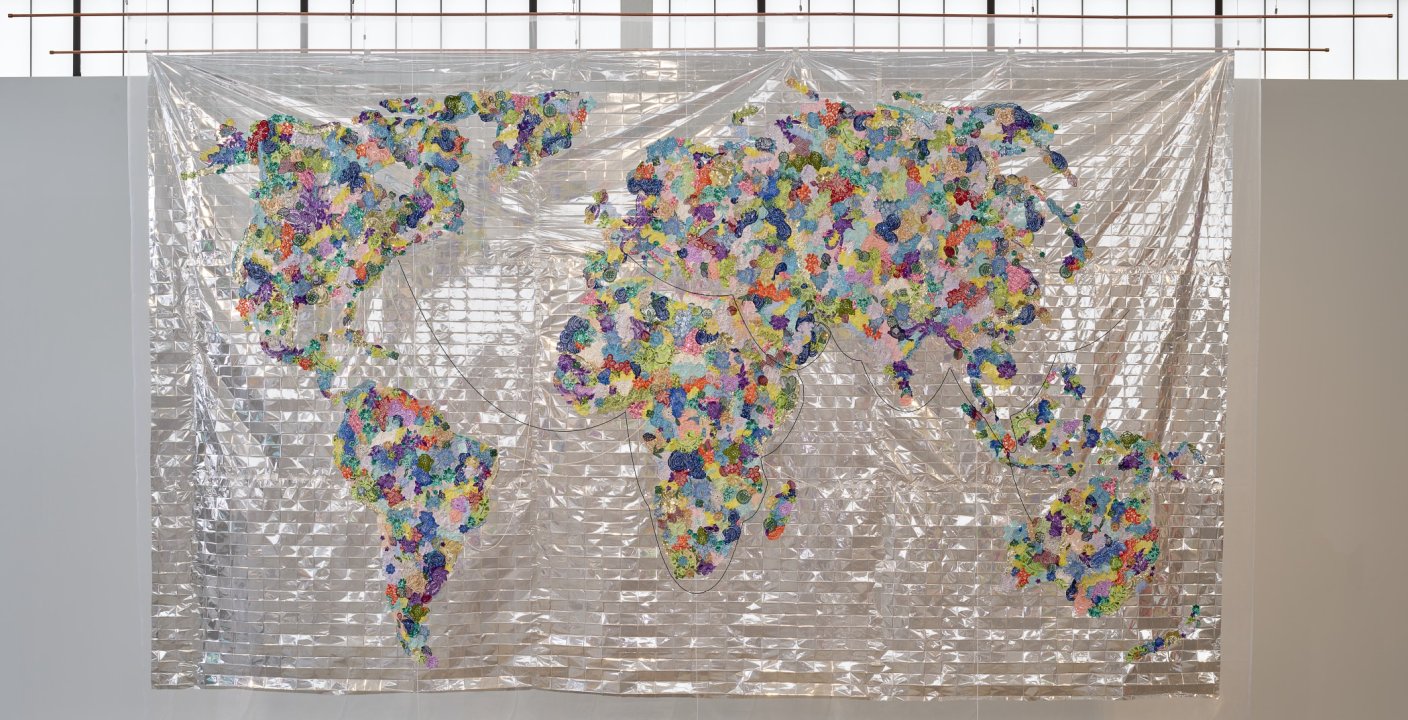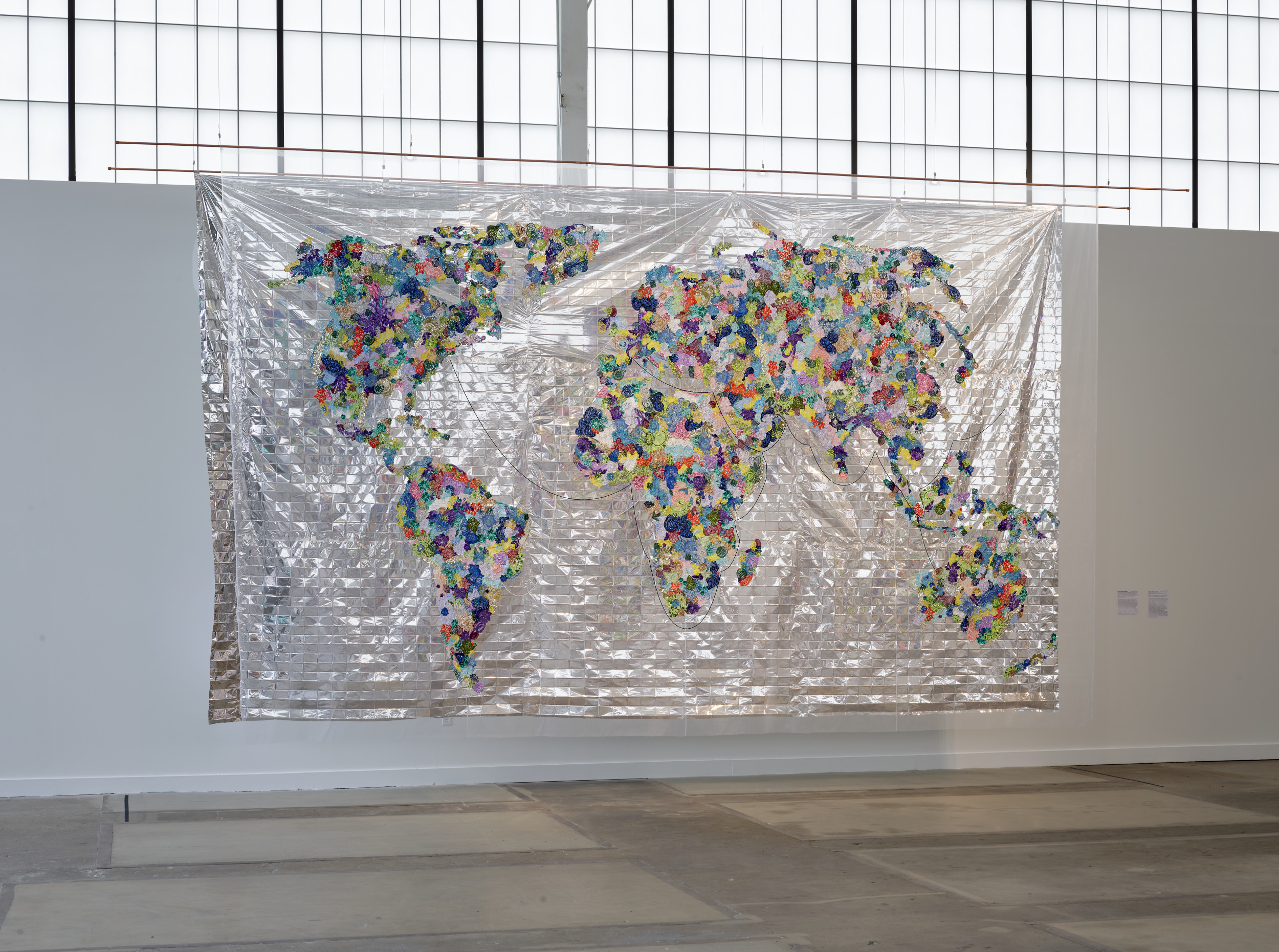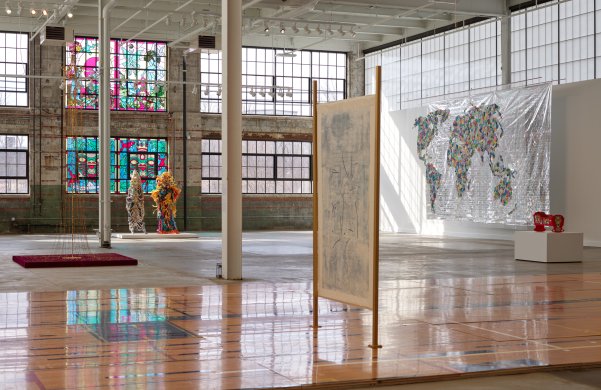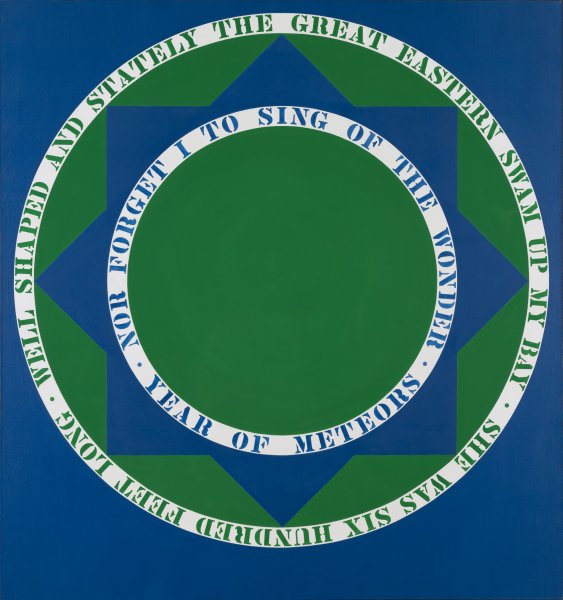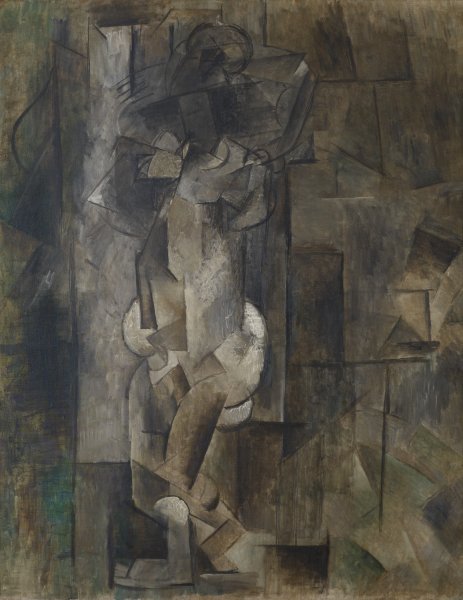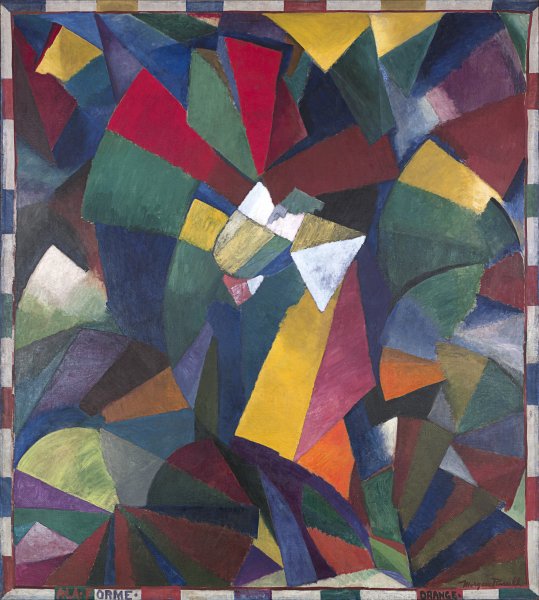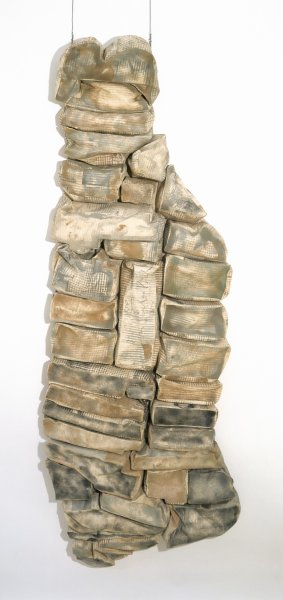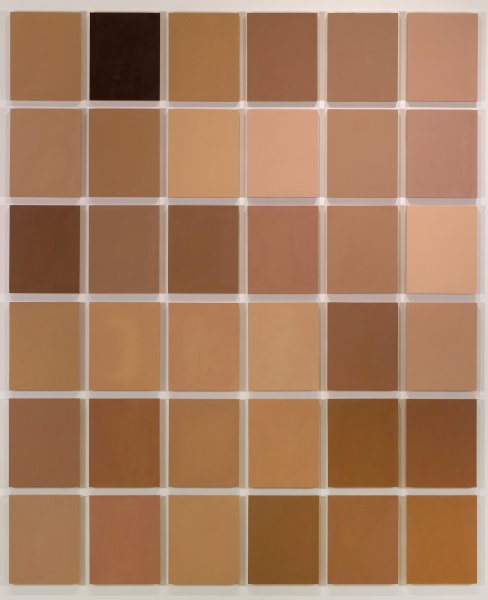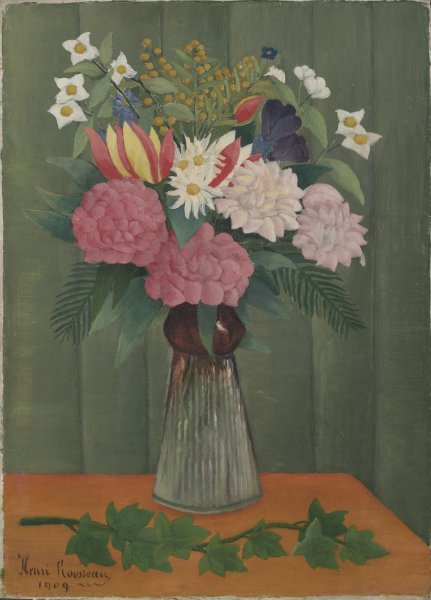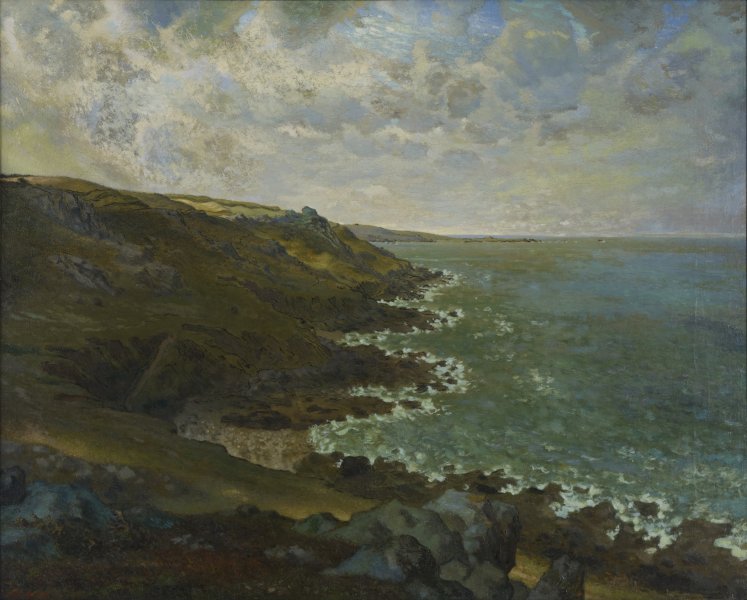Carolina Aranibar-Fernández
Bolivian, born 1990
Desplazamiento y Subsuelo (Displacement and Subsoil), 2020-2021
Artwork Details
Materials
fabric and beads on tulle, emergency blankets and copper rods
Measurements
156 x 264 x 40 inches (396.24 x 670.56 x 101.6 cm) overall
Collection Buffalo AKG Art Museum
Credit
Charlotte A. Watson Fund, by exchange, 2021
Accession ID
2021:3a-d
The flow of global capitalism doesn’t just impact human life; it is also embodied in people. Carolina Aranibar-Fernández’s work traces the routes of trade and migration across the waters of the globe to connect the extraction and transport of natural resources like metals and petroleum to movements of people.
In Desplazamiento y Subsuelo (Displacement and Subsoil), Aranibar-Fernández reveals how massive forces of global history impact individuals and their physical bodies. Embroidered flowers cut from Bolivian mantas, or shawls, make up the artist’s world map. Though first brought to South America by Spanish colonizers who insisted indigenous women wear European attire, over time symbols of imperialist oppression have been reclaimed by indigenous women in a spirit of community pride. Sewn strings of glass beads chart the global migratory histories of other goods and natural resources, as well as the involuntary movement of enslaved people, refugees, and asylum seekers. By including reflective emergency blankets, like those distributed at U.S. Immigration and Customs Enforcement (ICE) detention centers, the artist references the notoriously unjust conditions faced by migrants held at these sites. Yet, the flowers that punctuate the map comment on a relationship between exploitation and resilience: despite the use of land and nature as a source of profit and power, flowers continue to bloom.
